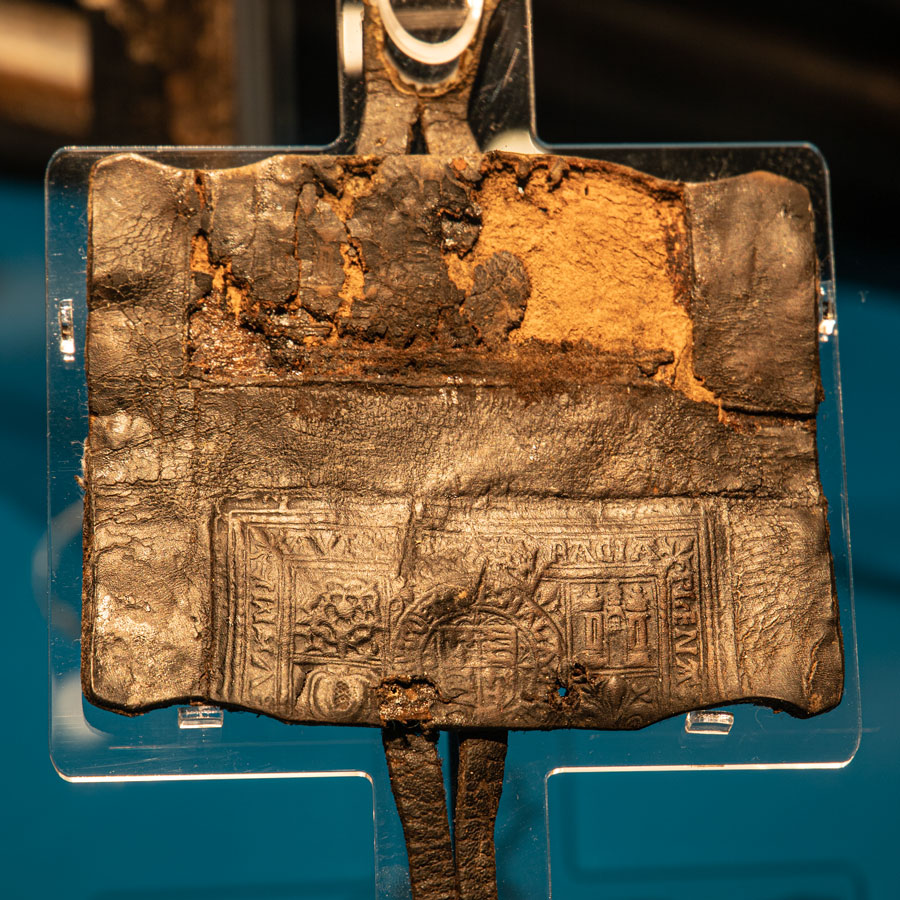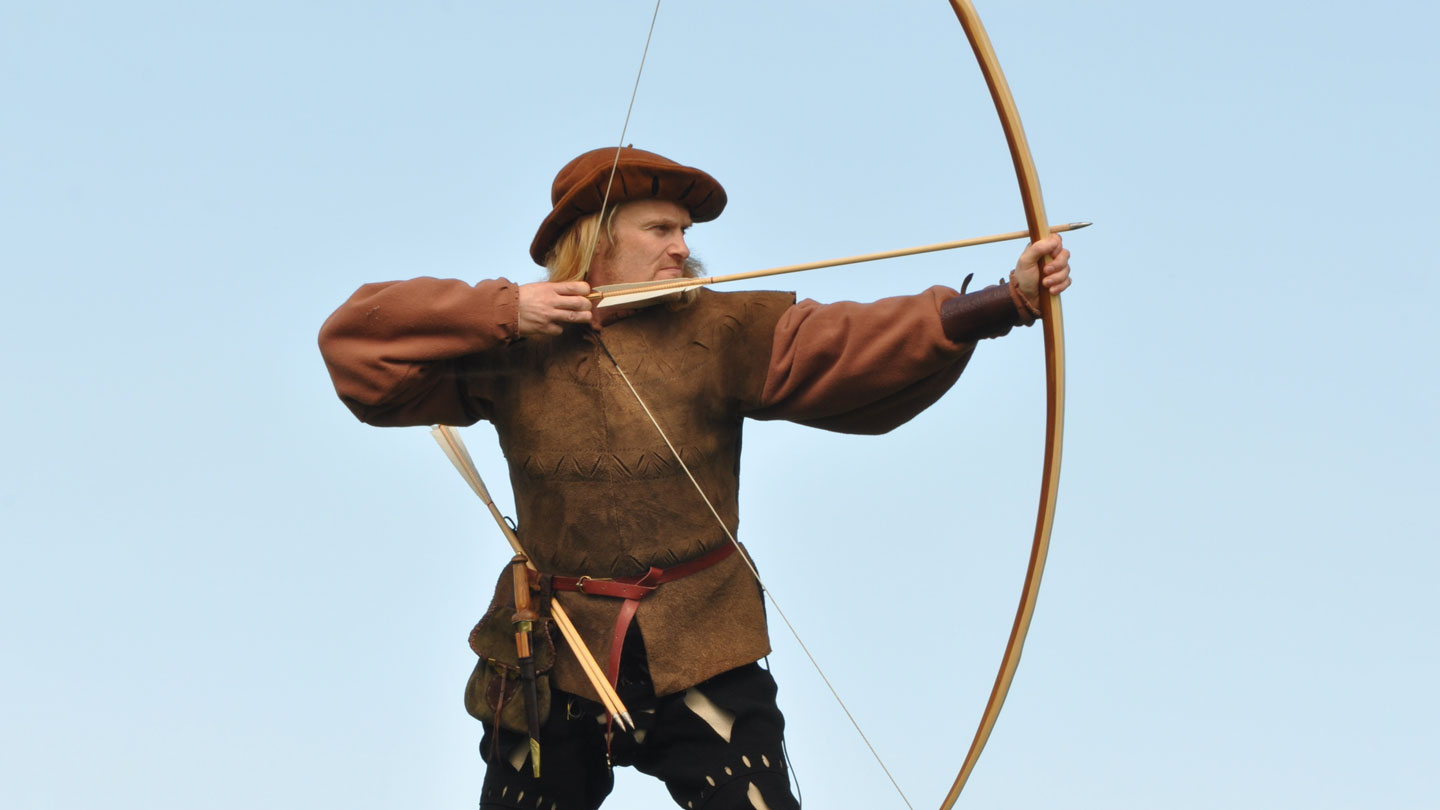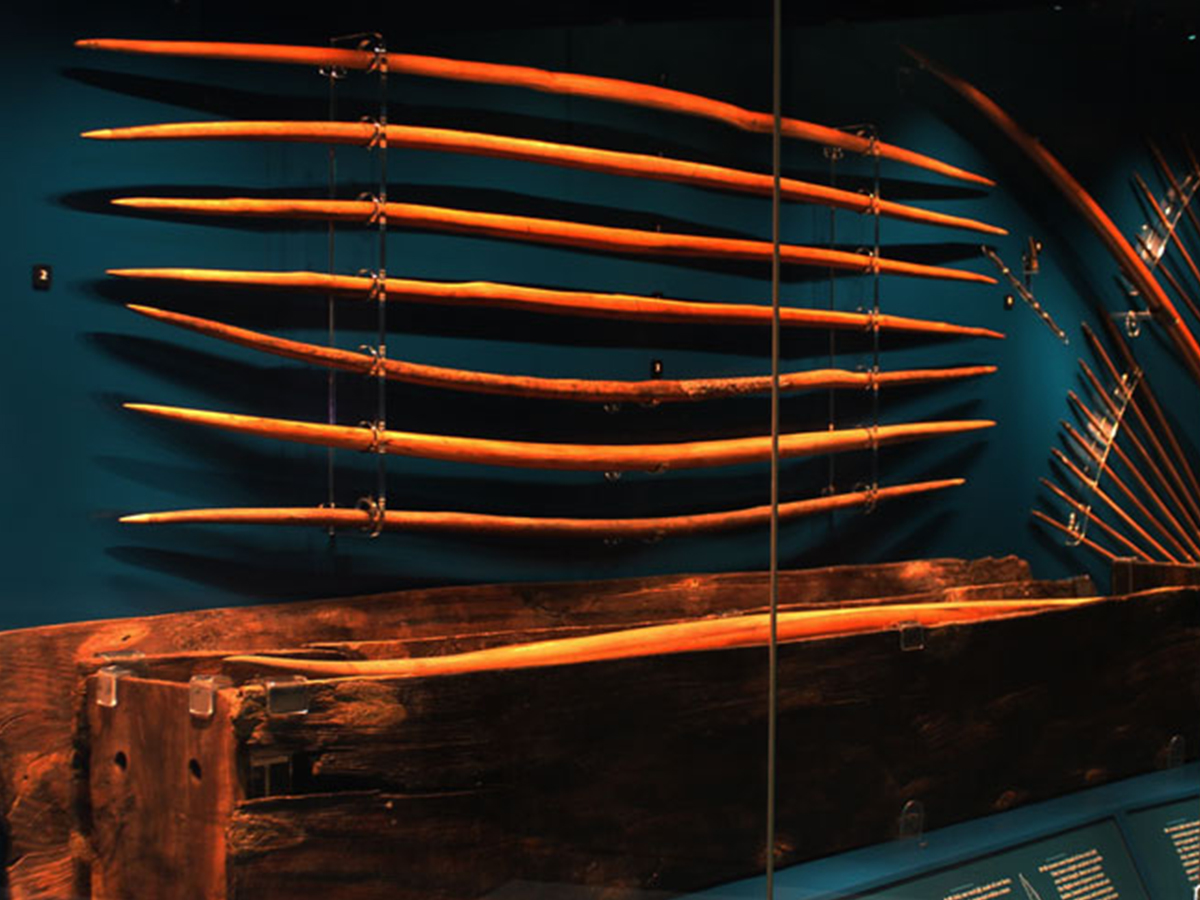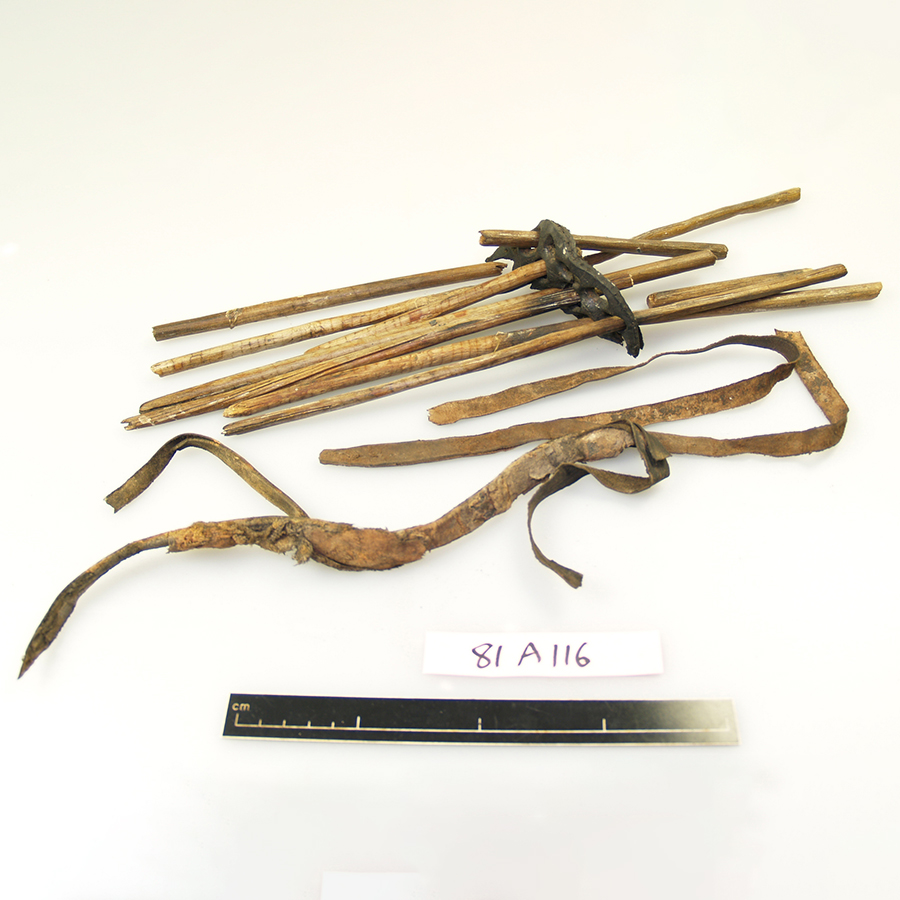
Chests of longbows and arrows were stored on the lowermost deck in the stern, though some of these had been taken to the upper deck, ready for action. Mass produced for the King’s Ships and for fortifications, these are the only examples of precisely dated English longbows.
The collection recovered is the only precisely dated archery assemblage surviving from any historical period. There are 172 longbows (of 250 listed for the ship), over 2,000 complete arrows and about 7,000 fragments. Four chests for longbows and seven for arrows were recovered.
There are 24 wristguards, predominantly of leather. These were strapped to the bow arm to protect it against the snap of the string. Many are stamped, and two display the combined arms of Katherine of Aragon and Henry VIII. There are parts of one arrow bag, but evidence for 17 more. One horn nock was recovered and one (possibly two) bowstrings, identified as either hemp or linen.
Spot locations of individual bows associated with arrows or wristguards indicate that archers were moving around the ship when the Mary Rose sank. The archers would have shot their arrows from fighting tops, castle decks and upper decks of the ship. The upper deck had a series of wooden blinds, some of which could have been removed for hand gunners or archers.






